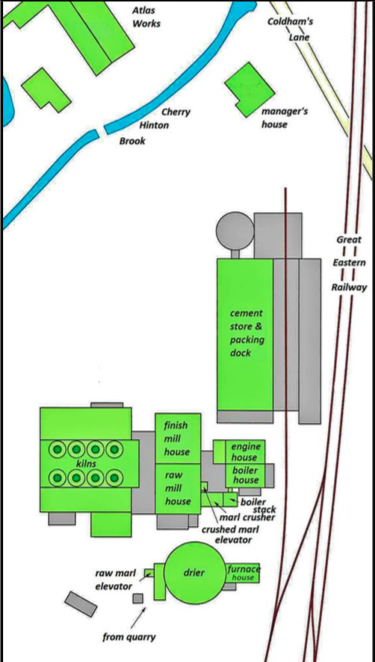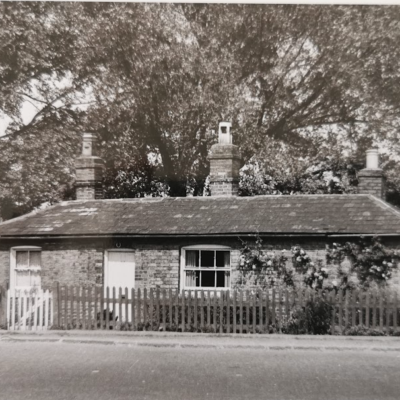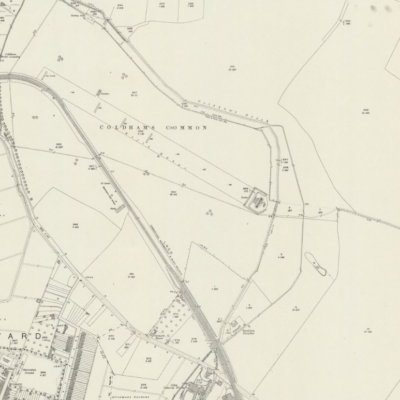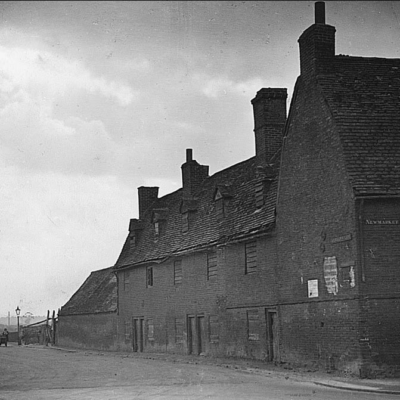Search by topic
- archaeology
- Building of Local Interest
- charity
- church
- crime
- dressmaker
- fire
- Great Eastern Railway
- Listed building
- Mapping Relief
- medieval
- oral history
- poverty
- Public House
- Rattee & Kett
- Religious House
- Roman
- scholar
- school
- Then and Now
- tudor
- women
- work
- world war one
- world war two
Search by text
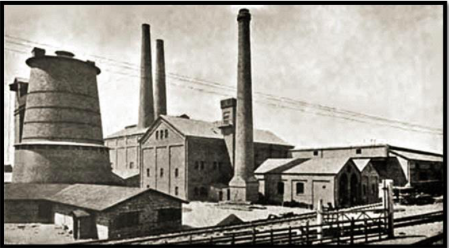
Saxon Cement Works
Saxon Cement Works
The Saxon Portland Cement Company was founded in 1900 and started production in 1901. It was a different kind of affair to the Romsey Town Works with greater investment and far advanced technology.
The site is bounded by Cherry Hinton Brook to the west, Coldham’s Lane to the north, the Cambridge to Newmarket‒Bury St Edmunds railway line to the east and The Tins pathway to the south. It is now an Army Reserve Centre, except for the north-west edge which is part of the car park for the neighbouring Sainsbury’s (built on the site of the old Atlas Works).
Timeline
1901 – Saxon Cement Works opens
1928 – Site used only for storage
1950s/early 1960s – Territorial & Auxiliary Volunteer Reserve Centre opens
1980s – T.A. Centre rebuilt
The Saxon Works
The ‛brains of the enterprise’ was Mr A C Davis, a chemist, who has been described as a pioneer in the development of cement technology. In his earlier years as an independent producer he was considered a maverick, disparaging of the dominant interests in the business. In time however he became managing director of the Association of Portland Cement Manufacturers and, as Sir Charles Davis, was appointed Lord Mayor of the City of London in 1945.
The works had eight Schneider kilns with one 45m stack for each set of four.
Production had its difficulties and in 1907 the Cambridge Evening News recorded an alarming explosion at the works. An explosion in the boiler room ‛hurled masses of iron and brickwork at least 50 yards’. Fortunately, there were no fatalities.
With the establishment of the newer, more advanced and cheaper to operate Norman Works in 1904, the Saxon Works were put to secondary use to make up the overall (Saxon and Norman) tonnage allowed in the operating license. The works were formally closed in 1928, being used for storage in the following years.
Army Reserve Centre
By 1967 the site had been rebuilt as the Territorial & Auxiliary Volunteer Reserve Centre (now known as Army Reserve Centre). The site was mostly one storey sheds with a row of staff houses alongside the brook. An assault course was built on the area between the lake and The Tins that is still in use in 2015 and can be viewed from the path.
The site was rebuilt again in the 1980s with more substantial buildings, but this time without the staff houses.
East of the railway line
The triangle bounded to the west by the railway line, the north by Coldham’s lane and extending to the east such that the entire Saxon site is a rough rectangle was also fully excavated by 1928.
In 1983 the northern most section of it is described as ‘ready mix cement works’ in the local plan.
In 2015 it is the Hanson Cement Works.
The Lake
By 1925 the excavation pit had become a lake, with an island in the centre, and had grown to its current size. The lake has been variously known as the Territorial Army lake, the Army Reserve lake and the CU Officer Training Corps Pit.
[add more here]
Further Information
- Read the complete report on East Romsey Town Cement Works (PDF)
- Cement Plants and Kilns in Britain and Ireland
- Aerial view of the Saxon Works in 1928
Contribute
Do you have any information about the people or places in this article? If so, then please let us know using the Contact page or by emailing capturingcambridge@
License
This work is licensed under CC BY-NC-SA 4.0





